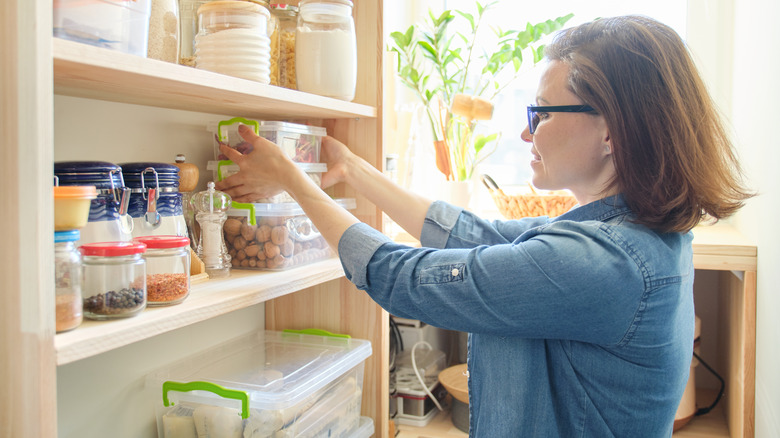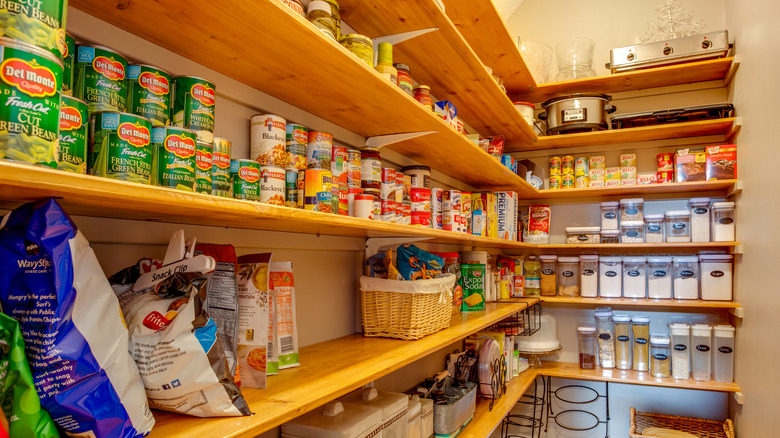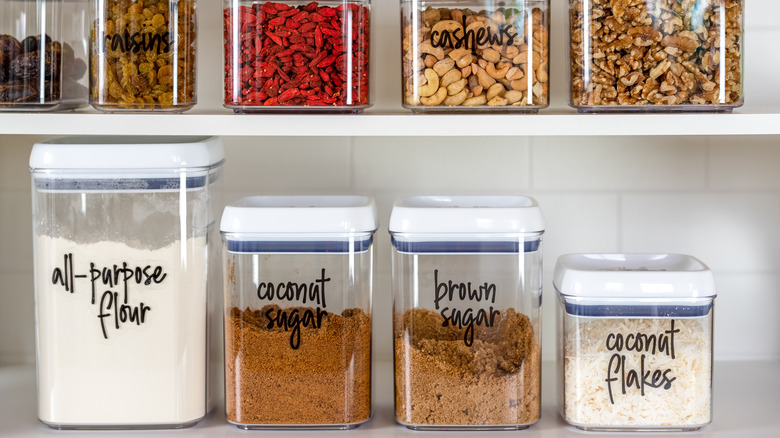The Simple High & Low Trick For Pantry Organization, According To An Expert
When the week gets hectic, busy kitchens can quickly become a mess. This goes for the pantry as well. With the whole family in and out of it looking for snacks and things to pack lunch with, it can easily become disorganized and cluttered.
Nicole Abramovici of Genius Organizing explains to TODAY that a chaotic pantry can cause a myriad of problems like letting items expire and purchasing new ingredients that you already have on hand. The professional organizer points out, "Once you are organized — know what you have and where it is — you are ready to use all those ingredients you forgot about and cook up some fabulous meals. You save time and money, and probably try some new dishes as well."
To effectively organize your pantry and enhance your meal prep, organization expert Ann Faber of Fab Simple Spaces tells AkronLife that you should examine how you utilize vertical space. This includes using top-to-bottom shelves strategically and organizing items based on your ease of access. Here's how you can apply this method to your own pantry to keep it neat and orderly.
Organizing high and low shelves
Since your top shelf is farther from reach, it's best to use this area for items you don't use as often. These shelves can store items you only use for entertaining like serving pieces and platters. You can also store things infrequently restocked in the kitchen like bulk spices, and backup items like extra boxes of cereal. This will free up valuable space at eye level for items you access more often.
Middle shelves are prime real estate for storing the items you use every day. Organize these shelves into sections such as cooking ingredients and snack foods. You can also sort them by which meal of the day they are used for or common categories like pasta, canned goods, snack, and condiments.
The bottom shelves are perfect for storing heavier items such as large jars, cases of water bottles, or pots and pans. Faber advises against placing heavy items on high shelves, as it can be dangerous and lead to accidents. Keeping the floors clear helps create a cleaner and more organized pantry. This open area will give off the feeling of an airy space that makes the pantry feel larger.
How to keep your pantry organized
Organizing your pantry requires continuous upkeep. So, it's important to establish routines and stick to them. Always put items in a consistent and convenient place. By assigning specific spaces for each item, you can easily find what you need and avoid unnecessary searching.
Regularly declutter your pantry to remove expired or unused items. This practice not only keeps your pantry organized but also ensures that you have ample space for the items you truly need. Consider using labels to help everyone in the household locate items quickly. This makes restocking your pantry easier in addition to making meal prep more efficient.
Clear containers will further enhance organization and visibility and allow you to see the contents at a glance. Use quality, air-tight ones to easily see baking ingredients and bulk items so you know when it's time to restock. Other items you can use to organize your pantry include lazy Susans and space risers. These allow you to maximize your space and easily take inventory of your pantry's contents before a grocery run.


